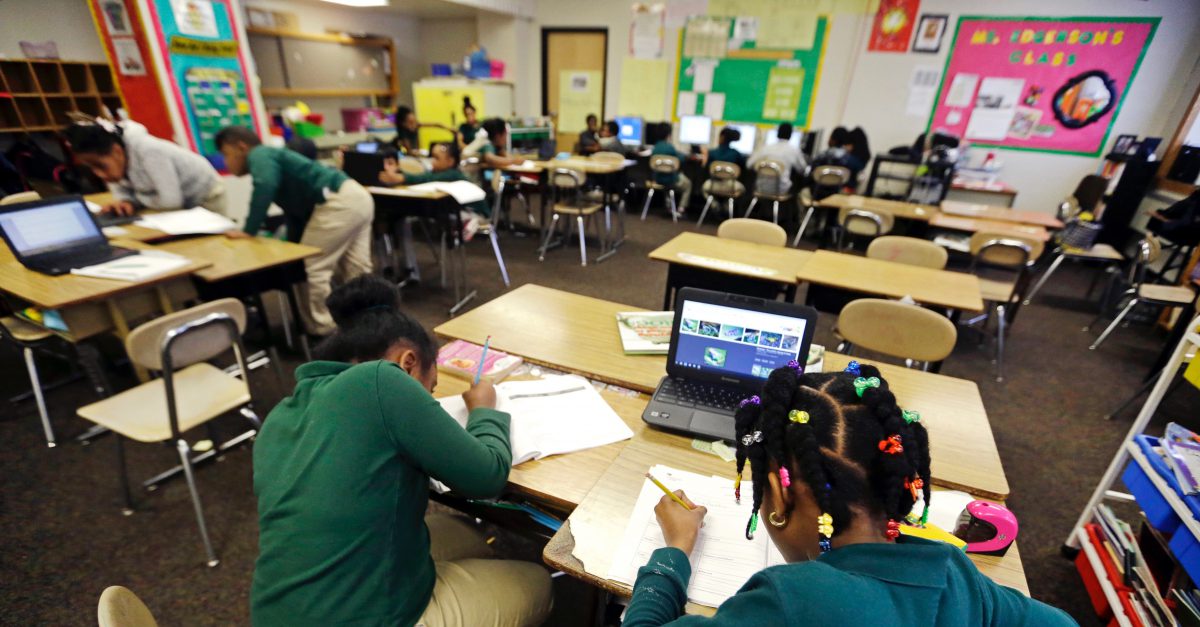As the largest school district in Texas, Houston ISD reportedly serves 216,106 students — enough to fill a small city and bigger than several in the Lone Star State.
Videos by Rare
Of those students, district records show 76.99 percent are economically disadvantaged.
Overcrowded and under-resourced, recent reporting from the Houston Chronicle revealed a higher-than-average retention rate for elementary students across HISD, with some schools retaining up to 25 percent of students to repeat a grade.
While students may be held back at a parent’s or student’s request, the numbers are reportedly alarming to state education leaders.
RELATED: Study shows Houston is the least affordable city in Texas for renters
According to reports, around 75 campuses in the greater Houston area held back more than 10 percent of their students, exceeding statewide averages.
With educators saying students may be retained because they lack necessary skills or failed to come to school, critics argue there are other issues at play, such as standardized testing and under-utilization of special ed.
Though the reasoning behind the high retention rates is important, so are the damaging stigma effects of repeating a grade, according to child psychologists.
Social consequences of retaining students can be severe: as a student loses contact with their friends and becomes labeled as an under-performer, or “dumb,” in kids’ lingo, they often suffer mentally.
Data shows students who repeat early grades are more likely to drop out of high school, even after being retained years earlier.
Although HISD made a decision this year to stop holding students back in hopes of improving their standardized test scores, and while scores may show improvement after the student repeats the grade, experts say the high scores are short-lived.
In addition to the potential psychological trauma and attitude shift about coming to school after failing, studies show holding students back is often an ineffective way to increase their academic skills, with students often maintaining their low scores during their second attempt.
If retaining students is so unsuccessful, then why do schools continue to do it?
In recent years, both educators and parents reportedly became concerned about “social promotion” in grade school and how it could be affecting student learning.
“Social promotion” is said to be the practice of moving children to the next grade to keep them with their age group, regardless of if they mastered the state’s requirements for skills.
Of course, this means some students may be moved to a higher grade without learning to read or write at the same level or, in some cases, at all, and, since they may not be prepared with basic skills, these students are at a high risk to continue to fall behind.
Retaining students could to be the answer, yet studies show it isn’t always the practice. How, then, can teachers and parents help students?
Some school districts are reportedly finding success with Individualized Education Plans (IEPs) designed to target students’ special and unique needs, as well as provide a foundation for early academic intervention.
RELATED: Houston reports fewer hate crimes — but numbers can be deceiving
“When we see schools that are doing this right, they identify kids pretty quickly. Immediate intervention – we know that’s a best practice,” Robert Sanborn, CEO of Houston-based advocacy group Children at Risk, said in an interview. “When you fail a child or you retain a child, the chances of them getting back on their feet and doing well are slim. If you retain, it’s like a black mark on this child.”
Although use of IEPs is showing some promise for improving student learning in a number of instances, the time, employee and financial resources for such a designation are simply not a possibility in some districts.
Schools require funding in order to provide students with these educational benefits — funding local district leaders say often falls short.
HISD officials said it regularly struggles to cover its budget, especially after changes made to Texas’ school funding laws required the property-rich district to send more money back to the state.
In the 2016-2017 school year alone, the district reportedly faced a $107 million shortfall.
After several investigative reports found HISD kept students out of special ed programs to save money, the district increased its special ed budget by $2.2 million prior to the 2017-2018 school year.
Based on the school’s data collection, just seven percent of students received special ed services before the findings held their feet the fire – about half the national average.
Still, HISD officials say more funding is needed to run early intervention programs, like pre-kindergarten, tutoring programs and after-school assistance.
Their effects of reducing the retention rate remains to be seen.



